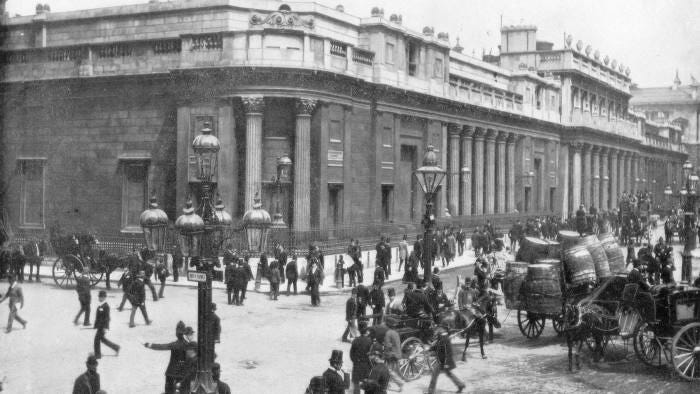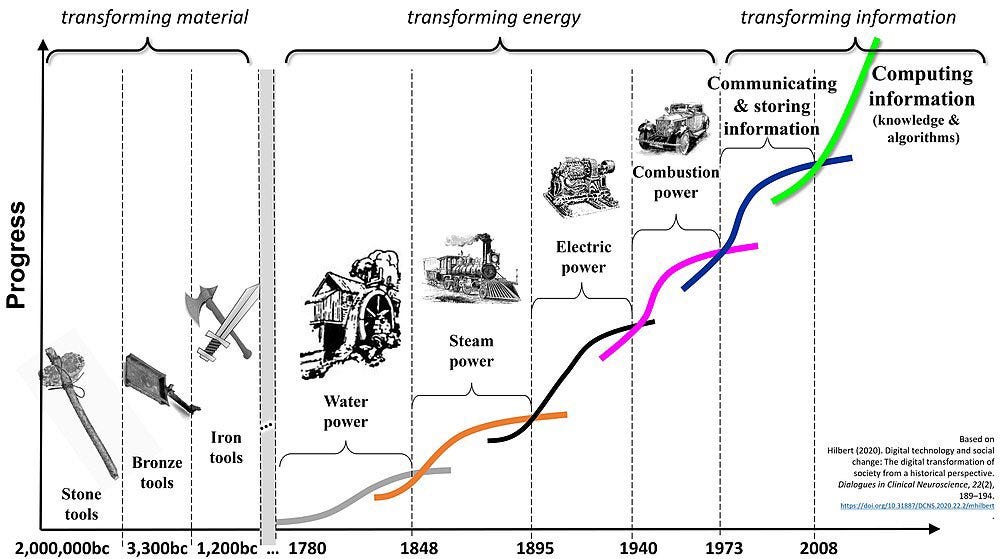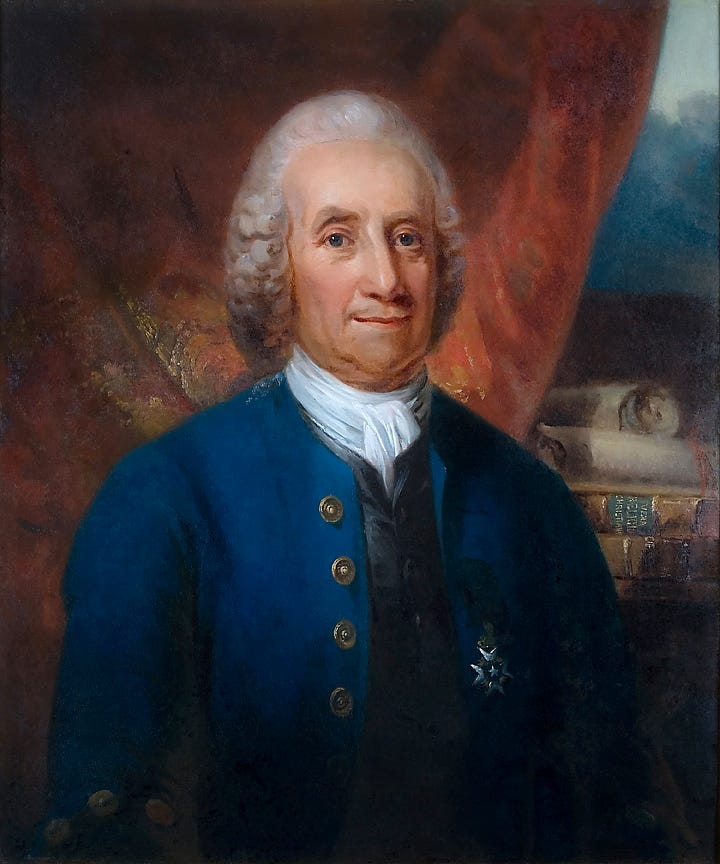VOL 33: TECHNOLOGICAL INVENTIONS OF THE 19TH CENTURY-3
OIL, AUTOMOBILE ENGINE 🚗, LIGHT BULB 💡
Hey Friends 🤓,
Trust you all had a great week 🤗?
Today at a Glance:
QuoteImportant InventionsConclusionFace of the WeekBusiness & StartupsRandom FactsTweet of the Week
Quote of The Week
“The only way to avoid criticism is to do nothing, say nothing and be nothing.”
Aristotle.
The previous series can be found here 👇🏽
TECHNOLOGICAL INVENTIONS OF THE 19TH CENTURY PART 1
TECHNOLOGICAL INVENTIONS OF THE 19TH CENTURY PART 2
OIL (1859)
Yea. You see that 😅, Oil is also a technology.
With this definition of Technology as “the science or knowledge put into practical use to solve problems or invent useful tools.”
The discovery of this technology has pushed the human race beyond the limitations of the 19th-century era.
Oil was not invented, it was discovered by the Chinese in 600 B.C, however wood remained the chief global fuel for centuries.
At the beginning of the 18th century, the invention of the first modern steam engine signalled the transition from an agrarian economy to an industrial economy. Steam engines could be powered by either wood or coal, but coal quickly became the preferred fuel, enabling massive industrialization growth.
Edwin Drake's discovery of oil in Pennsylvania in 1859 set the stage for the new oil economy.
The success of Edwin Drake's oil well drilling operations in Titusville would attract attention. Within a decade, John D. Rockefeller of the Standard Oil Company would come to dominate the oil industry both in Titusville and across the nation.
Petroleum was far more adaptable and flexible than coal. With the technological advances of the 20th century, oil became the preferred energy source. The automobile was the primary driver of that transformation.
Automobile ownership and demand for electricity grew at an exponential rate, as did oil demand. During World War I, oil-powered ships, trucks and tanks, and military airplanes demonstrated the importance of oil.
AUTOMOBILE ENGINE (1886)
There is no single name to the invention of this technology. Lots of people tried for hundreds of years to create a self-propelled transportation with each successive attempt building on top of the previous solution.
Karl Benz is widely regarded as the inventor of the technology but his success can’t be mentioned without the effort of men like Leonardo Da Vinci considered the ancestor of the modern automobile who first designed on paper a primitive self-propelled cart, Ferdinand Verbiest who started building as an experiment in 1672, Nicolas Cugnot, Richard Trevithick, Joseph Lenoir etc.
Though they did not build the first car, their contributions were instrumental in helping Benz make his, and he wouldn’t have succeeded without them.
Before now, horse-drawn vehicles had been in use for thousands of years, and it was hard to imagine life without them. But as the number of such vehicles increased during the 19th century, the accumulation of horse manure on the streets, and the associated stench, became unavoidable.
Horses had become both indispensable and unsustainable. To advocates of a newly emerging technology, the solution seemed obvious: get rid of horses and replace them with self-propelled motor vehicles known at the time as horseless carriages. Today, we refer to them as cars.
The technology came to limelight when in 1888, Karl Benz's wife decided to test out the car by driving 66 miles with her two teenage sons to her mother’s house. The trip was one of the world’s first automotive marketing stunts and showed people that the future would be driven by the automobile.
I can’t but mention Henry Ford, after building his first car in 1896, he is credited with inventing mass production of automobiles. Ford began working on the Model-T in 1908, and by the time the production of Model-T ended in 1927, over 18 million units had been sold.
I doubt if Henry Ford or Karl Benz could have previewed it “that this technology they are working on will one day drive itself without human intervention”.
But as we all know that cars of the future, will be built according to a new model that will be electric, autonomous and connected (we have them already). It will bring several benefits to society: less pollution, more safety, more free time and services (check out Robotaxi).
LIGHT BULB (1880)
Contrary to popular belief, Thomas Edison did not "invent" the lightbulb, but rather he improved upon a 70-year-old idea. In 1879 he was able to produce a reliable, long-lasting source of light and became the businessman genius that was able to take it from the lab to the marketplace.
Prior to that, most of the world live in darkness from dusk to dawn, light was very rare, fire was the main source of light, and it was stressful and very expensive to maintain.
In 1802, the world already knew about electricity but was just starting to understand how to control it, no power plants and houses didn’t have electrical outlets as we have today. The only power source then was batteries.
Same year, Sir Humphrey Davy the great British scientist was able to produce the world's first true artificial electric light. The issue was that it didn't last long and the light was far too bright for practical use.
Over the following 70 years or so, many other inventors created their versions of light bulbs. While they all showed promise, most, if not all, proved too expensive to produce or had other issues that prevented them from becoming commercially viable.
Thomas Edison invented and patented the first practical incandescent lightbulb in New Jersey in 1880. Edison’s lightbulb improved upon earlier lightbulb inventions by other inventors. Edison improved upon the earlier designs by using a carbon filament which made the bulb last much longer and didn’t require a high electric current to operate.
An important lesson here is that sometimes the invention just has to wait for the technology to catch up with it, the solutions that were coming up during those silent era was what Edison built upon.
We’ve gone from incandescent bulbs to LEDs that help us power our phone screens, TVs, Cars, Street-Lights, and Wristwatches.
It’s most time pleasing to know how many innovations are just tied to one single invention.
Conclusion
When considering these major inventions of the 1800s, it is vital to know how these inventions benefited our modern industrial and tech world. Every entrepreneur and business leader today owe them a sincere gratitude for igniting the revolution in their own backyard.
More than a century after their inventions first saw the light of day, their ideas live on, inspiring current and future generations of inventors, scientists, and innovators.
Today, we have several brands of the aforementioned inventions to choose from.
FACE OF THE WEEK
EMANUEL SWEDENBORG (1688 –1772)
He was a writer and a thinker during the Enlightenment period, he spent most of his life as a scientist and became Sweden country's leading expert in mining and metallurgy. He was also a military engineer, learned astronomer, reputed physicist, zoologist, anatomist, political economist, and a Christian mystic.
He studied and was influenced by the works of popular mathematicians like—Sir Isaac Newton. He made sketches of inventions for a flying machine, a submarine, a rapid-fire gun, an air pump, and a fire engine, they were not built during his time, the invention only existed on paper.
In his 50s, he started having this deep meditative experiences where he describes his spiritual eyes were opened and has experiences of heaven and hell. Using his skills as a scientist, he takes meticulous notes and records everything that he saw. There are volumes of books that have been written about his experiences.
Swedenborg abandoned his scientific investigations. For the rest of his life, he was purely a visionary and prophet. Many thought he was mad.
He died a bachelor despite writing volumes of books about marriage.
Business & Startups
Catlog is a Nigerian startup that helps their users create an online store and get orders via WhatsApp.
With Catlog, you can now easily make a list of your products and get a link you can share so customers can easily order from you on WhatsApp.
They aim to accelerate social commerce in Africa with their platform that helps social vendors get discovered, sell easily and crowdsource their sales.
Company's website: www.catlog.shop
Random Facts
It is believed that multilingual speakers outnumber monolingual speakers in the world's population. More than half of all Africans and Europeans claim to speak at least one language other than their mother tongue.
Tweet of The Week

Enjoyed this piece? Please let me know by hitting the ❤ button. It brightens my day to see if my readers enjoy the content (it really does!). Thank you so much!
Enjoy your weekend.








